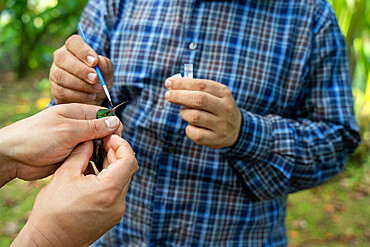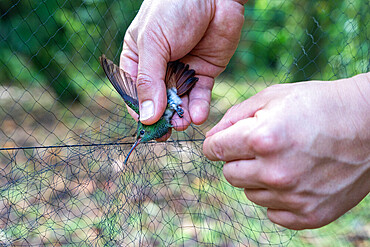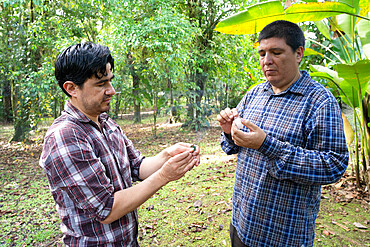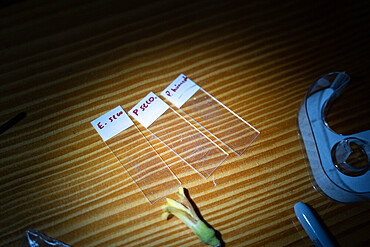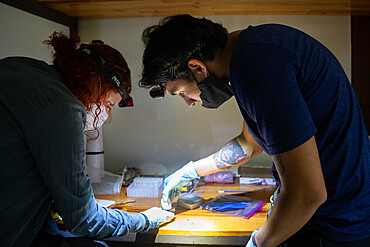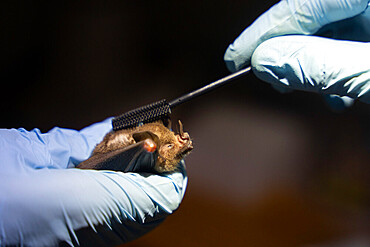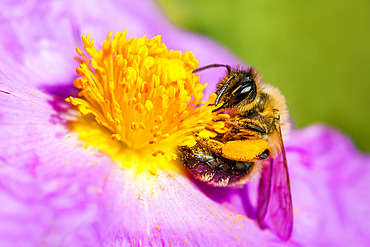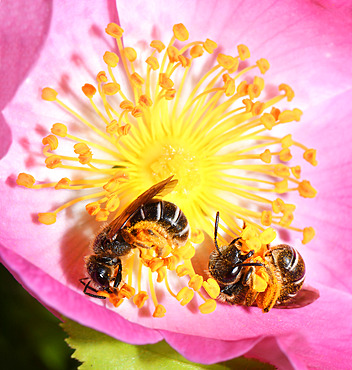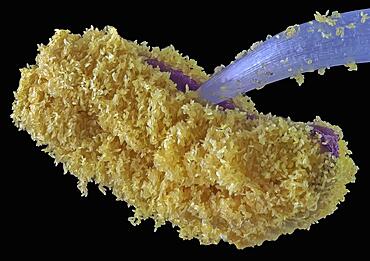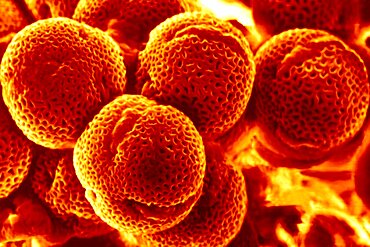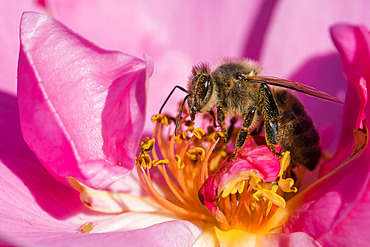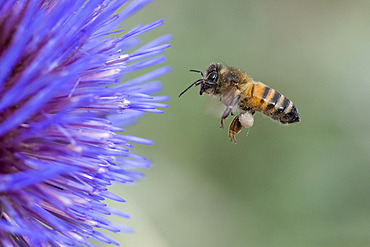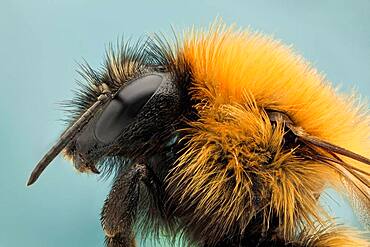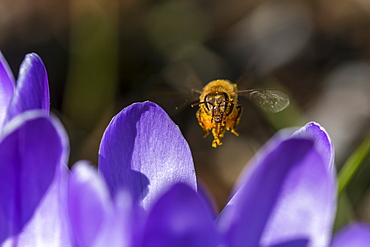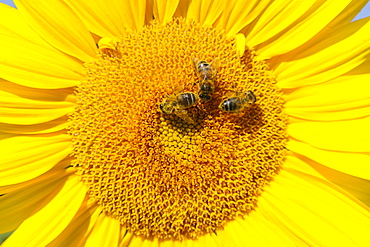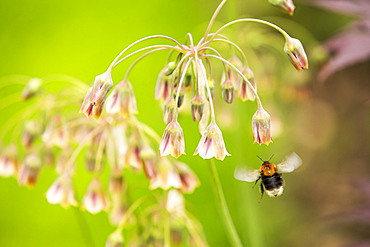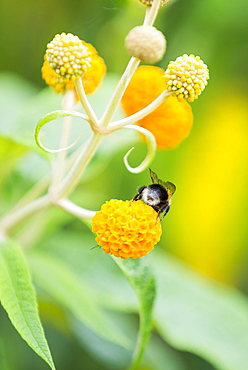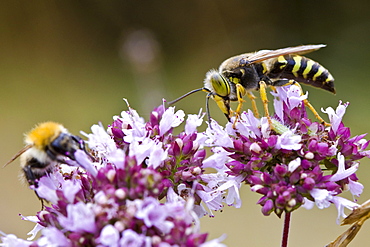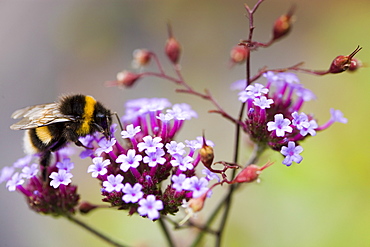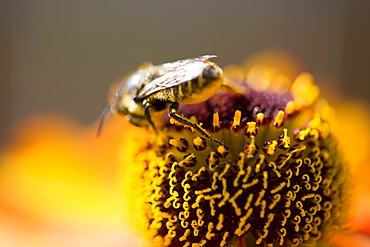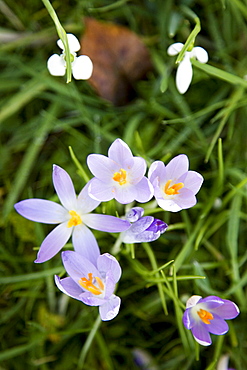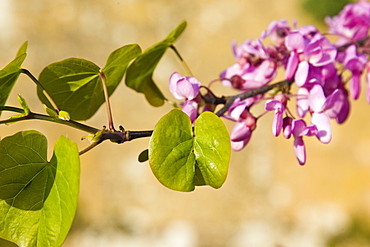Recent searches
Loading...
860-291440 - Researchers picking up pollen with a brush from the beak of a hummingbird Stripe-throated Hermit as part of a pollination study, rainforest at the "La Selva" research station in Puerto Viejo de Sarapiqui, Costa Rica
860-291438 - Researchers picking up pollen with a brush from the beak of a Rufous-tailed hummingbird as part of a pollination study, rainforest at the "La Selva" research station in Puerto Viejo de Sarapiqui , Costa Rica
860-291436 - Researcher catching Rufous-tailed Hummingbird (Amazilia Tzacatl) in a net set up for pollination study, rainforest at "La Selva" research station in Puerto Viejo de Sarapiqui, Costa Rica
860-291437 - Researchers picking up pollen using tape on the beak of a Rufous-tailed hummingbird as part of a pollination study, rainforest at the "La Selva" research station in Puerto Viejo de Sarapiqui, Costa Rica
860-291435 - Rufous-tailed Hummingbird (Amazilia tzacatl) in a net set up by a researcher as part of a pollination study, rainforest at the "La Selva" research station in Puerto Viejo de Sarapiqui, Costa Rica
860-291430 - Researchers applying a mascara brush to the hairs of a Sowell's short-tailed bat (Carollia sowelli) to test methods to capture pollen that bats may carry as part of a pollination study, rainforest at the "La Selva" research station in Puerto Viejo de Sarapiqui, Costa Rica
860-291429 - 3 microscope slides to analyze pollen transported on bat hairs, "La Selva" research station in Puerto Viejo de Sarapiqui, Costa Rica
860-291427 - Researchers applying tape to the hairs of a bat to test methods to capture the pollen it carries as part of a pollination study, rainforest at the 'La Selva' research station in Puerto Viejo de Sarapiqui, Costa Rica
860-291428 - Researchers applying a mascara brush to the hairs of a Sowell's short-tailed bat (Carollia sowelli) to test methods to capture pollen that bats may carry as part of a pollination study, rainforest at the "La Selva" research station in Puerto Viejo de Sarapiqui, Costa Rica
1174-11402 - A bee, Anthophila, collecting pollen, close-up, Londolozi Wildlife Reserve, Sabi Sands, South Africa
832-396574 - Honey bee covered with yellow pollen collecting nectar from dandelion flower, Important for environment ecology sustainability, Copy space
860-290766 - Honey bee (Apis mellifera) on Grey-leaved cistus (Cistus albidus) flower, Ardeche, France
860-290655 - Orange-legged Furrow Bee (Halictus rubicundus) females collecting pollen from a rose hip flower (Rosa canina), Vosges du Nord Regional Nature Park, France
832-395215 - Pollen of an Amaryllis (Amaryllidaceae), macro photo, magnification ABM 20 :1, Hesse, Germany, Europe
1178-42321 - Fuzz floating near face of serious Caucasian girl in forest
860-289905 - Honey bee (Apis mellifera) on rose flower, Jean-Marie Pelt Botanical Garden, Nancy, Lorraine, France
860-289899 - Honey bee (Apis mellifera) on Artichoke flower (Cynara scolymus), Jardin des Plantes, Paris, France
1350-651 - Like their relatives the honey bees, bumble bees feed on nectar and gather pollen to feed their young
1350-664 - A long-horned bee covered in pollen; the males of this solitary bee species are easy to identify because of the long antennae
1350-633 - A small metallic bee covered on pollen, it has a parasitic mite on the wing
1350-670 - As their common name suggests, they are often seen hovering or nectaring at flowers; the adults of many species feed mainly on nectar and pollen, while the larvae (maggots) eat a wide range of foods.
1116-49394 - A honey bee visits crocus blossoms, Astoria, Oregon, United States of America
1116-49395 - A honey bee enters a crocus blossom, Astoria, Oregon, United States of America
832-389084 - Close-up of a honey bee collecting nectar and pollen on the white flowers of a cherry tree, Austria, Europe
1116-48470 - The pollen laden center in the yellow bloom of a Prickly Pear Cactus (Opuntia) flower and future buds, Arizona, United States of America
1116-47107 - Close-Up Macro Shot Of A Beautiful Lavender, Pink And Yellow Hibiscus Flower, Honolulu, Oahu, Hawaii, United States Of America
1116-47225 - Bee On Sunflower, Caldeon, Ontario, Canada
860-287796 - Beekeeper inspecting hives during honey production
860-287794 - Honey bees (Apis mellifera) on pollen cells
860-287793 - Beekeeper inspecting hives during honey production
860-287790 - Honey bees (Apis mellifera) on pollen cells
860-287792 - Beekeeper inspecting hives during honey production
860-282775 - Honey bees on flower Sunflower, Lorraine France
911-10403 - Bumble Bee gathering pollen from an Alium flower.
911-10402 - Bumble Bee gathering pollen from an Alium flower.
911-10404 - Bumble Bee gathering pollen from a Buddleia flower.
797-11088 - Plants, Flowers, Rudbeckia, Bee on Rudbeckia laciniata Herbstsonne green headed coneflower.
1161-7648 - French farm homestead with crop of sunflowers at Champigny sur Veude, the Loire Valley, France
1161-4194 - Fresh Indian flowers for garlands and religious ceremonies at Mehrauli Flower Market, New Delhi
1161-7651 - French farm homestead with crop of sunflowers at Champigny sur Veude, the Loire Valley, France
1161-4188 - Indian women and children at work stringing garlands at Mehrauli Flower Market, New Delhi, India
1161-4189 - Indian women and children at work stringing garlands at Mehrauli Flower Market, New Delhi, India
1161-7650 - French farm homestead with crop of sunflowers at Champigny sur Veude, the Loire Valley, France
1161-7587 - Wasp and bee gather pollen from flowering oregano shrub Origanum Laevigatum to make nectar, Dordogne, France
1161-7649 - Sunflowers at Champigny-sur-Veude, the Loire Valley, France
1161-3972 - Bumble bee gathering nectar from Verbena bonariensis flower in herbaceous border of country garden, UK
1161-3916 - Clematis Montana Elizabeth, covers a wall in Gloucestershire, England, United Kingdom
1161-3971 - Honey bee gathering nectar from Verbena bonariensis flower in herbaceous border of country garden, UK
1161-3973 - Honey bee gathering nectar and covered in pollen from Echinacea herbaceous border plant
1161-2174 - Rape seed crop field near Stow-On-The-Wold, The Cotswolds, Gloucestershire, England, United Kingdom
1161-2884 - Snowshill Folgate lavender field, Worcestershire, United Kingdom The Cotswolds
1161-2167 - Rape seed crop field in Wyck Rissington and St Peter's Church in Little Rissington, The Cotswolds, Gloucestershire, England
1161-2883 - Imperial Gem lavender,Snowshill, Worcestershire, United Kingdom The Cotswolds
1161-2887 - Snowshill Imperial Gem lavender field, Worcestershire, United Kingdom The Cotswolds
1161-2173 - Rape seed crop field, Stow-On-The-Wold, The Cotswolds, Gloucestershire, England, United Kingdom
1161-2879 - Imperial Gem lavender,Snowshill, Worcestershire, United Kingdom The Cotswolds
1161-2888 - Snowshill lavender field, Worcestershire, United Kingdom The Cotswolds
1161-2885 - Snowshill lavender field, Worcestershire, United Kingdom The Cotswolds
1161-2886 - Woman walks through Snowshill lavender field, Worcestershire, United Kingdom The Cotswolds
1161-2169 - Rape seed crop field, Wyck Rissington, England, Gloucestershire, United Kingdom
1161-2166 - Rape seed crop field in Wyck Rissington and St Peter's Church, Little Rissington, The Cotswolds, Gloucestershire, England
1161-2878 - Imperial Gem lavender,Snowshill, Worcestershire, United Kingdom The Cotswolds
1161-2168 - Rape seed crop field in Wyck Rissington and St Peter's Church, Little Rissington, The Cotswolds, Gloucestershire, England
1161-2097 - Crocuses and Snowdrops grow in Oxfordshire woodland , The Cotswolds, United Kingdom
1161-2183 - Tree branch thought to be a Judas Tree, Gloucestershire, The Cotswolds, England, United Kingdom
1161-2868 - Foxgloves in a country garden, Swinbrook, Oxfordshire, United Kingdom
1161-2867 - Foxgloves in a country garden, Swinbrook, Oxfordshire, United Kingdom
1113-91853 - Bee collects pollen on blooming echiums, Echium candicans, Madeira, Portugal
817-416276 - squamigera Loisel in the Vall de Laguar, Benimaurell province of Alicante, Valencia, Spainh
817-416275 - Ferula communis in the Vall de Laguar, Benimaurell province of Alicante, Valencia, Spainh
1113-32325 - Close up of magenta rose, rosery at Domaine de Charance, Gap, Haute Provence, France, Europe
1113-32330 - Close up of magenta rose at rosery at Domaine de Charance, Gap, Haute Provence, France, Europe
1113-32108 - Close up of a pale pink Clematis montana with small snail and stamina
1113-32324 - Pink and white unfilled rose, rosery at Domaine de Charance, Gap, Haute Provence, France, Europe
1113-32331 - Close up of magenta rose at rosery at Domaine de Charance, Gap, Haute Provence, France, Europe

